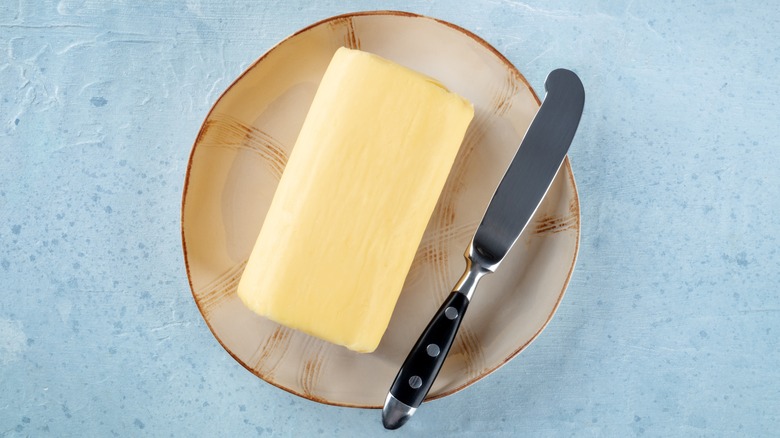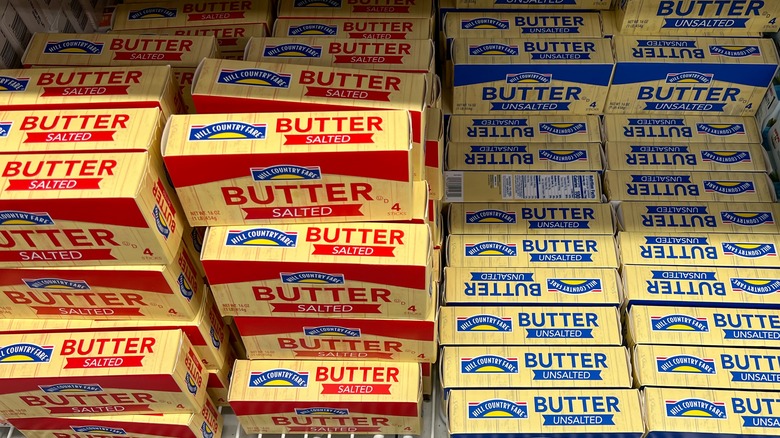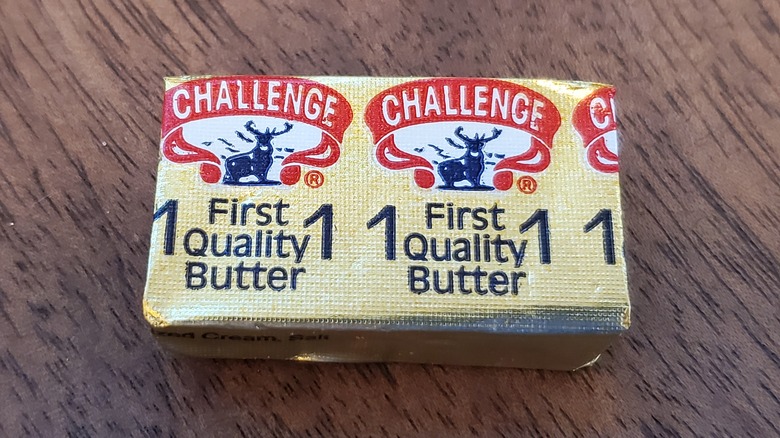Why Sticks Of Butter Are Longer On The East Coast Than On The West
If you've ever traveled or moved cross-country, you may have noticed one surprising difference in the grocery store: The shape of butter sticks varies depending on where you are in the country. On the East Coast, they're longer and thinner, while out West, they're typically shorter and fatter — the Rocky Mountains serve as the approximate dividing line, so most of the Midwest also has those skinnier sticks of butter.
Here's why: Up until the start of the 20th century, American butter was usually sold in one-pound blocks. Then, a New Orleans chef requested that his butter company provide it in quarter-pound sticks (before this, sticks were not a common form). This idea caught on, and an Illinois company, the Elgin Butter Co., started selling butter molds that produced what is now the long and skinny East Coast butter stick (sometimes referred to as "Elgins"). The West Coast wasn't a major butter producer until the 1960s. When it began ramping up production, dairy producers in California created their own machines and molds that produced the so-called "Western Stubbies."
But why is there still a divide?
It's not entirely clear why two different shapes of butter sticks are found in various parts of the United States. It might simply be a historical hangover, based on the locations of different butter producers. However, some popular grocery store butter brands have actively maintained this unique cultural difference. For example, Minnesota-based butter maker Land O' Lakes produces both types of butter sticks, distributing them to their respective sides of the country. The dividing line between the two types of butter sticks loosely aligns with time zones: states in the Mountain and Pacific time zones generally use Western Stubbies, while those in the Central and Eastern time zones use the Elgins — although Texas is an exception, with Western Stubbies being sold there as well.
That said, now that larger national brands are distributing butter across the entire country, it's possible to find Elgin sticks on the west side of the country. But it might be too soon to declare the great geographic butter divide over.
Are there any important differences?
The good news is that when it comes to using your butter, it really doesn't matter which type of stick you end up with. Both East and West Coast sticks typically weigh four ounces (a quarter of a pound) and contain eight tablespoons of butter. If you're measuring them for cooking, most butter packaging tends to have helpful markers on the side to denote what proportion of the stick equals a tablespoon, so it's easy to adjust between the two butter shapes.
However, if you're buying a butter dish, you may want to pay attention to which kind of butter sticks will fit in it. East Coast sticks are about 4.8 inches long and 1.3 inches wide and tall, whereas West Coast ones are much stumpier, measuring 3.1 inches long and 1.5 inches wide and tall. Fortunately, there are butter dishes available that can accommodate both types of butter, ensuring your butter storage system will work no matter where you move in the country.


